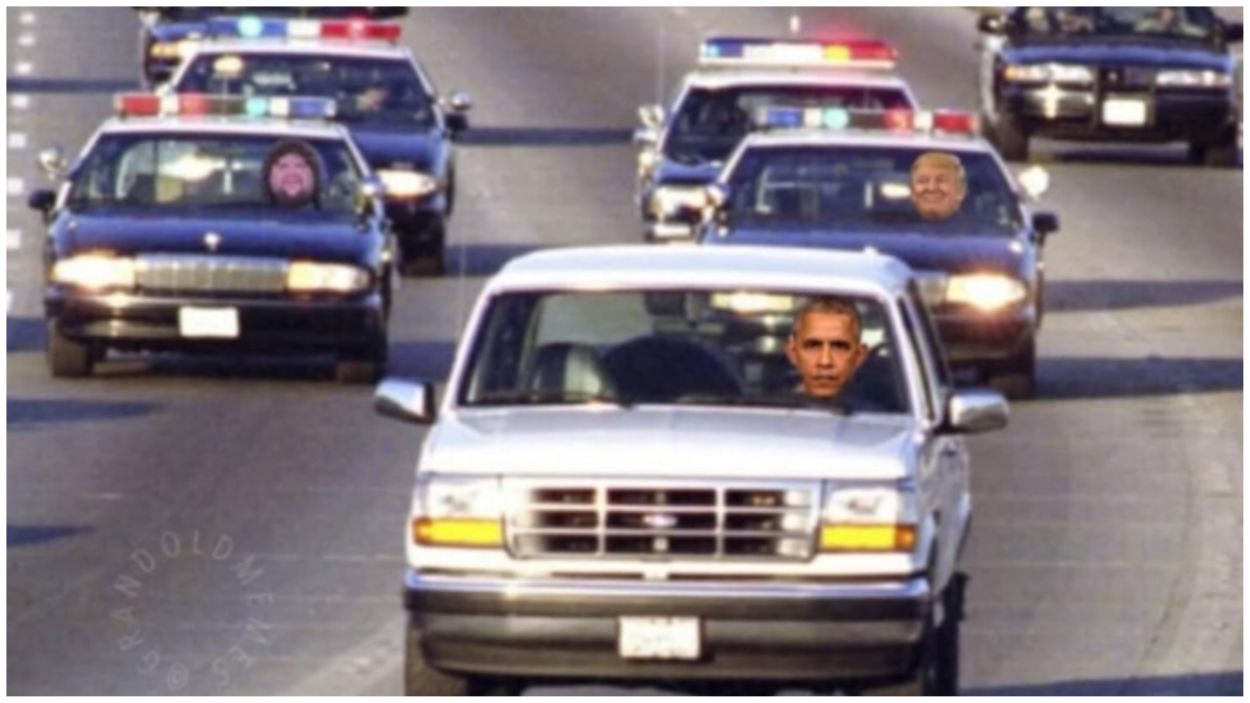On July 26, 2025, U.S. President Donald Trump reignited his ongoing feud with former President Barack Obama by sharing a doctored meme on Truth Social that mimicked the infamous O.J. Simpson white Ford Bronco police chase of 1994.
In the image, Obama appears as the getaway driver, with Trump pursuing him in a police cruiser. The meme injects humour by showing Vice President JD Vance, sporting long hair reminiscent of his college days, trailing in a second squad car. Vance amplifies the meme’s reach by reposting it on X (formerly Twitter) with a crying-laughing emoji.
Donald Trump Jr. first shared the meme on July 22, helping it gain viral traction. This social media moment follows Trump’s posting of an AI-generated video on Truth Social. In the video, FBI agents “arrest” Obama in the Oval Office as various politicians repeat, “no one is above the law.” The clip ends with an image of Obama in an orange prison jumpsuit behind bars
These memes and videos have emerged against the backdrop of heightened political tensions and renewed scrutiny of the 2016 election. U.S. Director of National Intelligence Tulsi Gabbard recently stated that she has declassified documents containing what she describes as “overwhelming evidence” that former officials in the Obama administration created the Trump-Russia collusion narrative in an effort to undermine Trump’s presidency. She characterises this as a years-long conspiracy aimed at subverting democracy.
Read: Trump Predicts Kimmel and Fallon Cancellations After Colbert Feud
Trump’s recent media tactics, which include viral memes and edited videos, have ignited a heated debate about digital misinformation, political polarisation, and the limits of online satire. With prominent political figures involved and millions engaging on social media, these instances highlight the changing role of social media in shaping political narratives.






